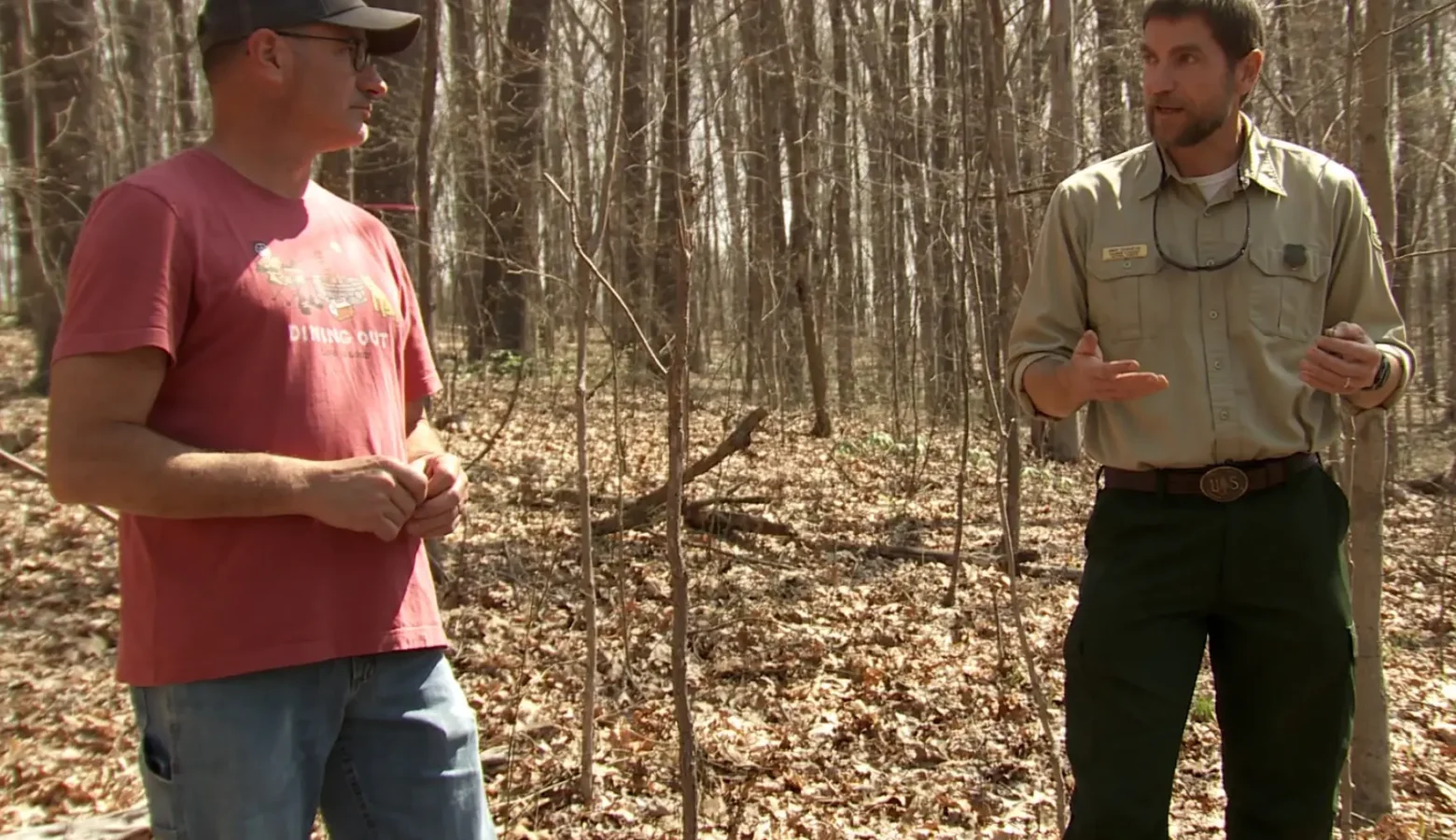Hoosier National Forest moves forward with the Buffalo Springs Restoration Project

The Hoosier National Forest is one step closer to finalizing plans for the Buffalo Springs Restoration Project in southern Indiana. The project would involve gradually cutting down trees, doing prescribed fires and using some herbicides on thousands of acres near Patoka Lake.
The controversy over the project boils down to one question: Should we actively manage the forest or not?
Environmental groups and some residents say no. They say logging and burning could introduce invasive species as well as threaten imperiled bats and the water quality in Patoka Lake.
Join the conversation and sign up for the Indiana Two-Way. Text “Indiana” to 765-275-1120. Your comments and questions in response to our weekly text help us find the answers you need on climate solutions and climate change at ipbs.org/climatequestions.
David Van Gilder is the senior policy and legal director for the Hoosier Environmental Council. He said the group’s main issue with the forest service is that the agency believes the forest needs a lot of management.
“That somehow the — what is clearly and certifiably a dominant oak hickory forest somehow needs more help to continue to be an oak hickory forest. Kind of ignoring some of the downsides of that,” Gilder said.
District Ranger Chris Thornton said not doing anything, however, would mean long-term damage to the forest. He said it’s seen more disease and fewer bird populations due to climate change and a lack of natural disturbances like the buffalo.
“If we don’t actively reintroduce disturbances in these ecosystems using tools like prescribed fire and timber harvest, we will lose the ecosystems that so much of our wildlife depends on for survival,” Thornton said.
“Without action, we have evidence to believe that those degradations in forest health would lead to some negative water quality effects in and of themselves. So this activity is meant to maintain that forest health and therefore the watershed health over the long term as well,” added Hoosier National Forest Supervisor Mike Chaveas.
Officials with the forest service found the project wouldn’t have a significant environmental impact and — because the work is to take place over a decade or more — any issues would be temporary.
The agency said it also won’t harvest any old growth forests.
One new part of the project would be to study how the forest rebounds from a tornado. A tornado in August damaged the Paoli Experimental Forest — impacting some research projects already taking place there.
Thornton said the forest service is hoping to turn this into a positive learning experience by studying how trees grow back after such an event and whether there’s a difference between areas that have been salvaged or fenced.
“Is there a difference between planting and not planting? And not just planting regular species that are common to this area. We’re looking at climate change and maybe some more species that are less common, but are more common to our south. Planting those to see if they do well in our changing climate,” he said.
Anyone who submitted an official comment on the project will have 45 days to object to it.
Rebecca is our energy and environment reporter. Contact her at [email protected] or follow her on Twitter at @beckythiele.


